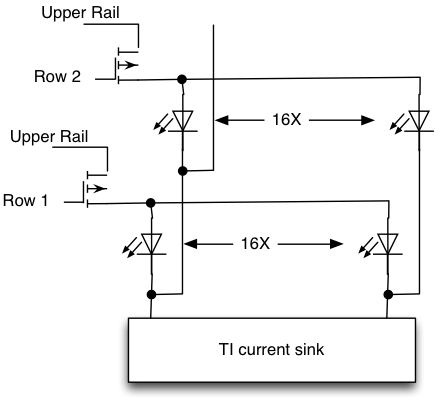I'm helping build this art installation that amounts to a large 16 x 16 pixel display. I settled on using 16 TI TLC5926 constant current driver chips chained together to give me direct drive to each LED. In retrospect I'm doubting myself and wondering if this was a heavy-handed approach.
If I had done "the usual" LED multiplexing approach (i.e. LEDs at row, column intersections, and application of persistence of vision techniques), I might have perhaps been able to pull this off with 32 "drive pins" (rather than 256), at the expense of more software complexity and less effective brightness.
In a Multiplexed Anode-Row Cathode-Column topology, the TLC5926 would seem well suited to driving the Columns (sinking current). What would be an analogous / complementary chip for driving the rows in a similar chainable shift-register interface, and able to source up to 120 mA per channel (to match the TLC5926's sink capability)?
To be clear, I don't need a high-side current source. I'm basically looking for a serially controllable and chainable high side switch (preferably 16-bit to match the TLC5926 on the low side). Trivially, this could be accomplished by using two 8-bit 74HC595 shift register to drive the gates of 16 discrete FETs, but I expect there is a more integrated way to accomplish this.




